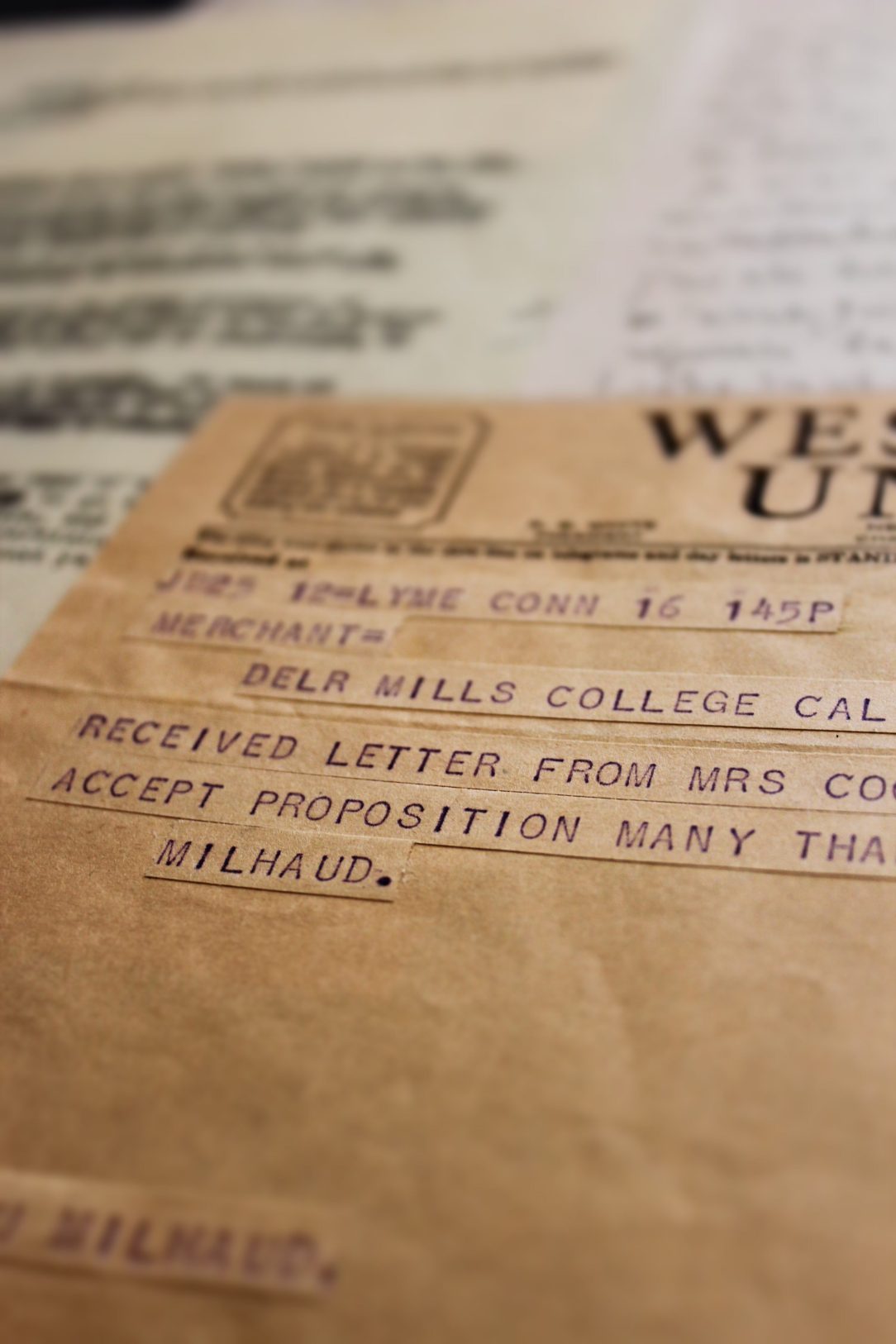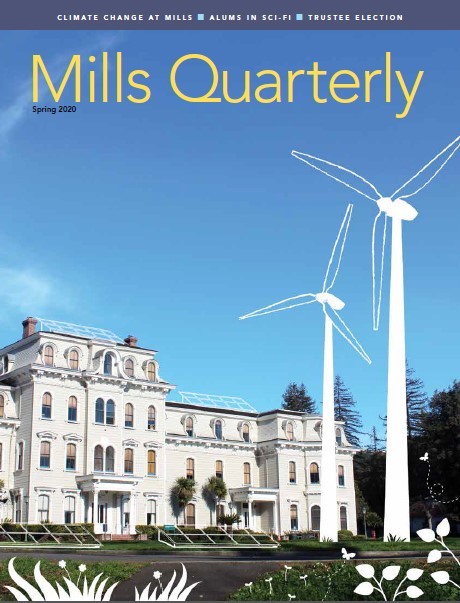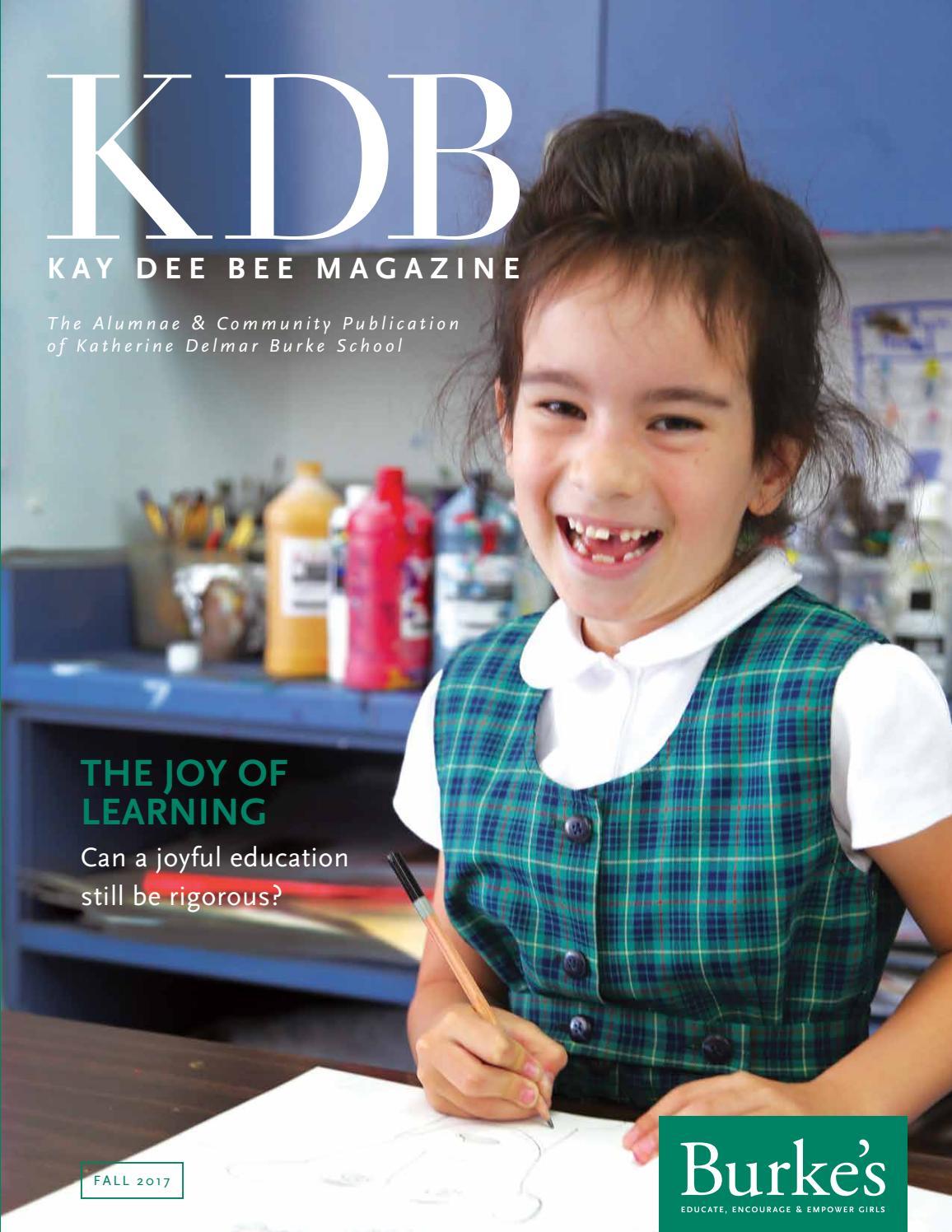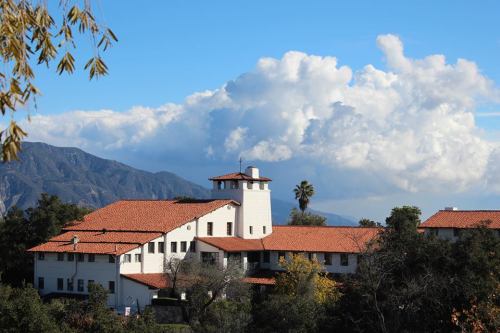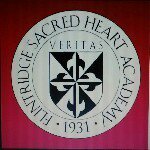Safe Haven
On December 8, 1941—the day after “a date which will live in infamy”—then-president Aurelia Henry Reinhardt wrote a letter to all Mills families. With the hindsight of nearly 80 years, it’s a surreal read; the main point of the letter was not to offer solace or organize war efforts, but to reassure parents that the Mills campus was unlikely to face any danger from a Japanese attack. “The English Channel is 26 miles wide; New York is 3,500 miles from Europe; California is 5,500 miles from Japan and 2,500 miles from our nearest possession in the Hawaiian group,” she wrote. “May I assure you that there exists no reason to change in any way the schedule and curriculum of this college in the spring term which begins Monday, January 5.”
At that point, no one knew that many students of Japanese descent would soon opt to leave Mills, hoping to avoid separation from their families as they were forced into internment camps across the United States. In the years leading up to World War II, President Reinhardt had approached a number of European artists and intellectuals to offer them a place at Mills as the Third Reich marched across the continent and sent to concentration camps anyone it deemed a threat, including Darius Milhaud and other notable figures in the College’s history, but that welcoming spirit couldn’t protect some of her own students.
When it comes to political and cultural forces outside the campus gates, the College has historically been limited in what it can do to protect its students. But as an institution, Mills has long welcomed members of marginalized communities, and outside restrictions have not altered the campus culture of acceptance.
